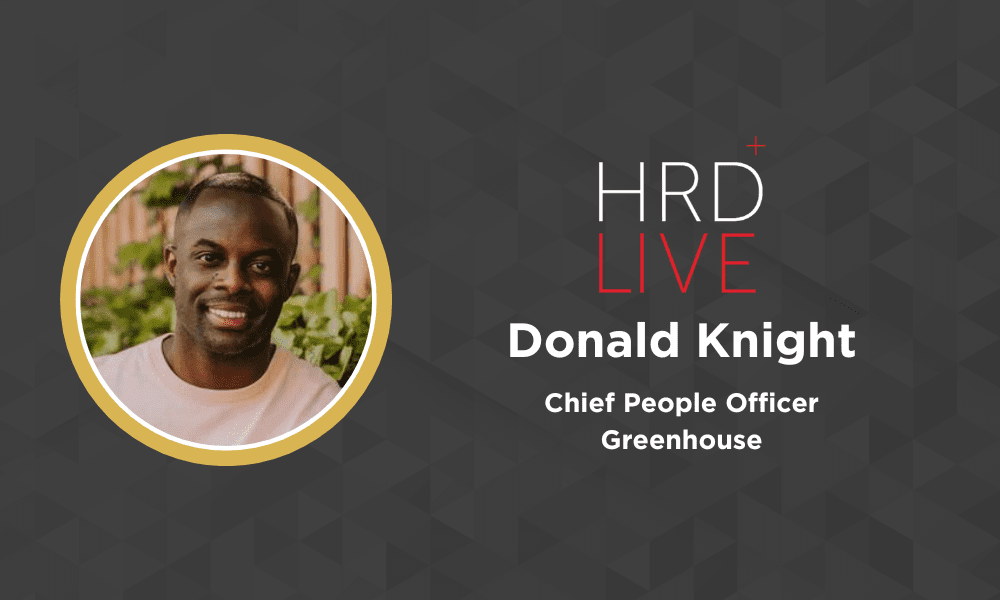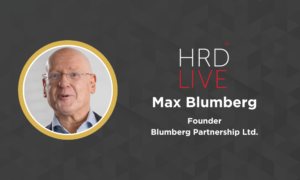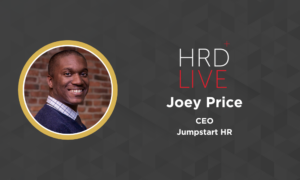Micro-improvements, long-term strategy: Allyship in action with Donald Knight
- 5 Min Read
Donald Knight offers a personal account and a fresh perspective of allyship in the workplace, including recommendations for ‘micro-improvements’ that counteract microaggressions and long-term strategies for allyship that drive innovation and creativity.
- Author: HRD Connect
- Date published: Jun 7, 2023
- Categories

Podcast: Play in new window | Download
Subscribe: RSS
The root word of allyship, explains Greenhouse Chief People Officer Donald Knight, is ‘All.’ “Allyship is, how are you inviting, engaging, championing, and empowering all people?” This slight difference in approach to allyship is hugely significant. It demands a continuous approach to inclusion, as Knight explains:
“Regardless of how much of a great ally we’ve been with one demographic or with one group, championing that group, or walking alongside that group, there’s still room for improvement for us to do those (things) for other groups as well.”
The role of the ally
When Knight was an intern, he received the support and allyship of his then-CHRO, Kay Kennedy. Kennedy encouraged leaders from across the organization, including another future ally, Diane Harris, to reach out to Knight and encourage him to pursue a career in HR. Without the support of Kennedy and Harris, who pushed through his initial resistance to the HR profession, Knight acknowledges his life would have been very different.
Of course, not all HR leaders are like Kennedy and Harris. Many organizations struggle with the concept of allyship, and as a result, alienate minoritized workers. Knight points out some common pitfalls of people leaders. “They feel like there’s no room for improvement,” he notes. “That there’s nothing for them to learn since they’re surrounded by people.”
Demographics at a societal and organizational level are constantly changing. Employees constantly gain new information, perspectives, and skills. Accordingly, HR leaders must constantly seek new ways to engage and champion their people.
Equally, many organizations simply don’t know where to begin. Knight shares some typical concerns: “I don’t know how to connect with people from different backgrounds. I don’t know how to champion women.” Although fear is natural, Knight argues this does not absolve any leader of their responsibility. Instead, he suggests HR leaders seek out organizations that handle allyship well and learn the fundamentals of allyship habits, behaviors, and actions.
Two quick examples of allyship in action
As someone who has both benefited from allyship and served as a powerful ally, Knight was able to share two simple examples of how to champion and support minoritized individuals in the workplace. “We have to make sure we don’t talk over people,” he begins. “But it doesn’t have to be something so philosophical. One easy example is men who talk over women on meetings. It’s not OK. An ally would call that out.”
By respectfully pointing out that someone was about to say something and has been talked over, an ally can quickly implement a ‘micro-improvement,’ Knight’s solution to micro-aggressions.
He offers another example of a micro-improvement. “What I like to do at the end of my meetings is to say, ‘Hey, I’m going to do a round robin to make sure we got everybody’s perspective,’” he explains. This ensures everyone present hasthe opportunity to share their voice.
When HR and business leaders miss these opportunities for micro-improvements and allyship, Knight emphasizes the organization-wide impact it can have.
“We recognize diversity drives creativity, creativity drives innovation, innovation drives revenue, and revenue drives profit. Well, if you don’t have that diverse voice in there, you’re stifling your innovation, you’re stifling your creativity, and thusly, you will see it adversely impact the balance sheet.
Listen to the full episode to hear Knight’s perspectives on measuring progression, bringing the gap between allyship expectations and reality, and sustaining allyship initiatives into the long term.
Timestamps
00:09 – Introduction
00:59 – How do you define ‘Allyship,’ and why does it not mean we all have to view things the same way?
02:15 – Can you share a time when you felt you had the support of an ally? What can HR learn from it?
05:36 – What common barriers does HR face when encouraging employees to become an ally?
07:56 – What structures, training, or practices can you recommend to make allyship a more tangible practice?
10:00 – How does a lack of allyship negatively impact organizations?
11:45 – We know that allies are not always as effective as they think. What can HR do to remove this gap between expectation and reality?
13:54 – How can HR leaders measure progression in a more abstract concept like allyship, to ensure intentions are matched with actions?
14:14 – How can HR leaders ensure that their efforts to promote allyship are sustained over the long term?
________________
Donald Knight is the Chief People Officer at Greenhouse. He is a commercially focused HR Leader with a proven record of driving financial results, business growth, and asset value through the development and delivery of people strategies. He has lived and worked abroad and excels in finding and optimizing talent on a global level.
To listen to more episodes of the HRD Live Podcast view our full archive on HRD Connect. Alternatively, listen and subscribe on Apple or Spotify!









